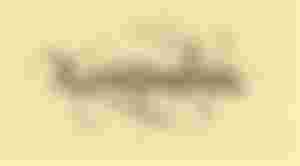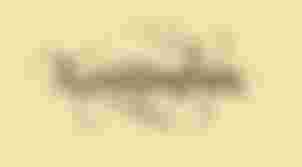Calligraphy combines art and writing because its goal is to give art form in letters through a certain style of writing, so below read everything about it - how, where and why it was created, all the way to what it is used for today.
The art of beautiful writing encompasses both ordinary handwriting and works of art written with this ancient skill; because achieving perfect aesthetic balance has always been highly valued.
The benefits of art for a child’s development are numerous, so it’s no surprise that parents support their little ones when they decide to ‘learn to write beautifully’.
Different types of tools are used for calligraphy, and the letters are written on parchment, papyrus and paper. It originates far from Eastern countries, and you can find out all the details about the history of calligraphy below.

Where and when was calligraphy created?
One of the most significant creations of mankind is the letter, because we can read important historical texts; and from the very beginning, the calligraphers of that time tried to make the letter signs more attractive for the main function which was to convey information.
Famous masters of calligraphy are Persian, Islamic and Western calligraphers.
According to unofficial data, the oldest forms of calligraphy originated around 4000 BC, in ancient China. They were created by carving characters into ram’s horns or turtle shells, and as a result of a combination of painting and the need for communication.
In China, they were also the first to use a brush to write signs on hard surfaces, between the 11th and 14th centuries BC, and the oldest calligraphic characters that have been preserved to this day are inscribed in metal plates around 200 BC. .
In addition to Chinese, the following types of calligraphy were important for the development of this skill:

East Asian calligraphy
Ink calibration is often used in this calligraphy when writing Chinese characters, and it is one of the most important arts and the most refined forms of painting in East Asia.
It also influenced the emergence of Suiboku's monochromatic painting, as well as other styles of art, including a style of painting that was entirely based on calligraphy - Sumia.
Indian calligraphy
Indian calligraphy is characterized by a huge religious influence, and its rich heritage is due to the lack of modern painting technologies.
The best example is the Holy Book of the Sikh (religion) which was traditionally handwritten.
Tibetan calligraphy
Calligraphy represents a central part of Tibetan culture, and the manuscript is derived from Indian written documents.
Religious sites were important for the development of calligraphy and once Tibetan calligraphers used writing brushes, while today they use pencils and felt-tip pens.
Persian calligraphy
Calligraphy developed in Persia even before the emergence of the Islamic faith, because in Zoroastrianism beauty and readability were rewarded.
The main types of Persian calligraphy are "nastalik", "shekasteh-nastalik" and "Nagashi-kat".
Islamic calligraphy
Calligraphy was for Muslims a visible expression of the greatest art of all, and spread alongside the Islamic religion and the Arabic language.
This is a worshiped form of Islamic art because it allows for a connection between the language of Muslims and the religion of Islam.
Development of calligraphy of the western world
Ours also belongs to Western calligraphy, and it uses a phonetic alphabet that characterizes the principle - one voice, one letter sign.
Both Cyrillic and Latin are represented in it, and the monasteries in which educated monks copied old manuscripts and thus multiplied them are most responsible for the development of calligraphy in the Western world.
Numerous letters originate from the period of the Roman Empire, some of which we still use today, such as Roman capital, rustic and uncial; while during the reign of Charlemagne a letter was written under the name of Caroline.
In the Renaissance, carolina was the inspiration for calligraphers for new significant letters, such as the humanistic minuscule and italics, which we also use today.
Development of calligraphy of the western world
Ours also belongs to Western calligraphy, and it uses a phonetic alphabet that characterizes the principle - one voice, one letter sign.
Both Cyrillic and Latin are represented in it, and the monasteries in which educated monks copied old manuscripts and thus multiplied them are most responsible for the development of calligraphy in the Western world.
Numerous letters originate from the period of the Roman Empire, some of which we still use today, such as Roman capital, rustic and uncial; while during the reign of Charlemagne a letter was written under the name of Caroline.
In the Renaissance, carolina was the inspiration for calligraphers for new significant letters, such as the humanistic minuscule and italics, which we also use today.
The revival of Western calligraphy
At the beginning of the 11th century, printing became more and more present, so handwritten and hand-decorated books became a real rarity. But at the end of the 19th century, William Morris revived this type of calligraphy.
His aesthetics have influenced numerous calligraphers, including Edward Johnston, who devised his unique style of fully sharpened manuscript after studying ten-century manuscripts.
Along with Johnston, the Austrian Rudolf Laris published six books on manuscripts, and they greatly influenced German calligraphers, who at that time did not give up the use of Gothic manuscripts, which left a strong influence on their styles.
What is calligraphy used for today?
Although the skill of beautiful writing cannot be praised by a large number of people today, calligraphy is still used today because the digital era has made things much easier.
We could define modern calligraphy as the art of giving form to letters in a virtuoso way and many use it to make greeting cards, invitations, legal documents, business cards and many other ways of presentation.
Today, written forms have become much more abstract, so the field of action of the art of beautiful writing is more than a literal reproduction of historical and religious texts.

